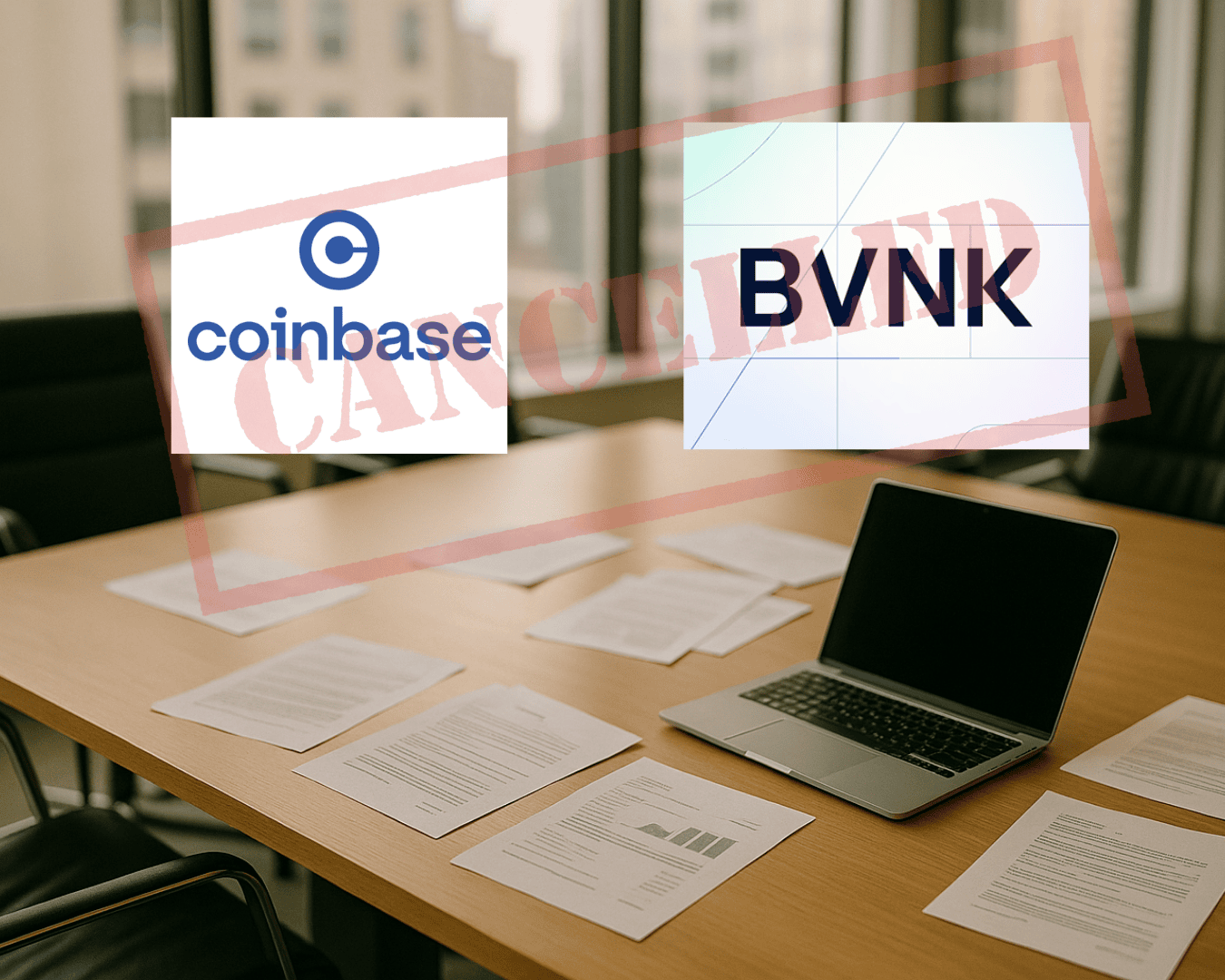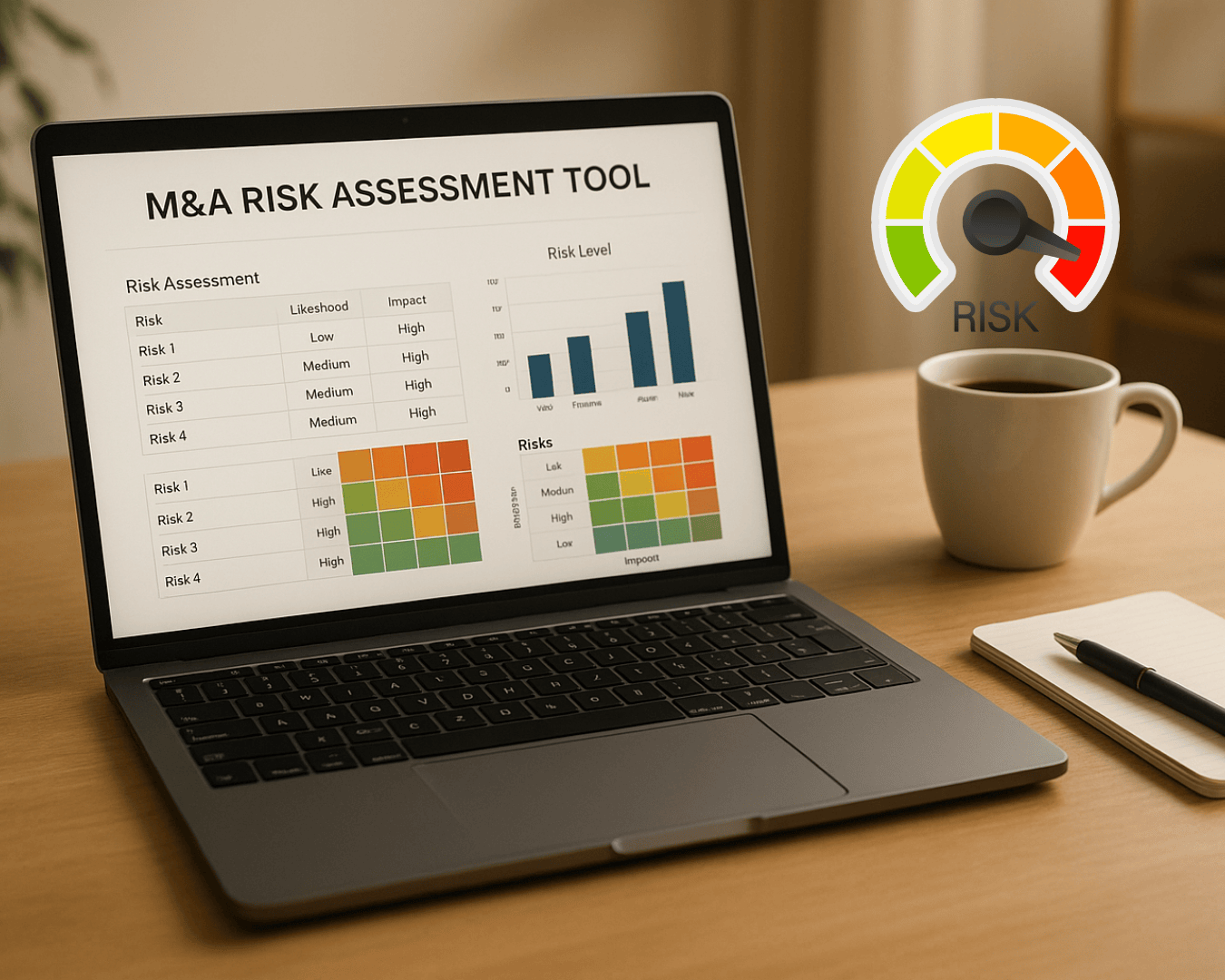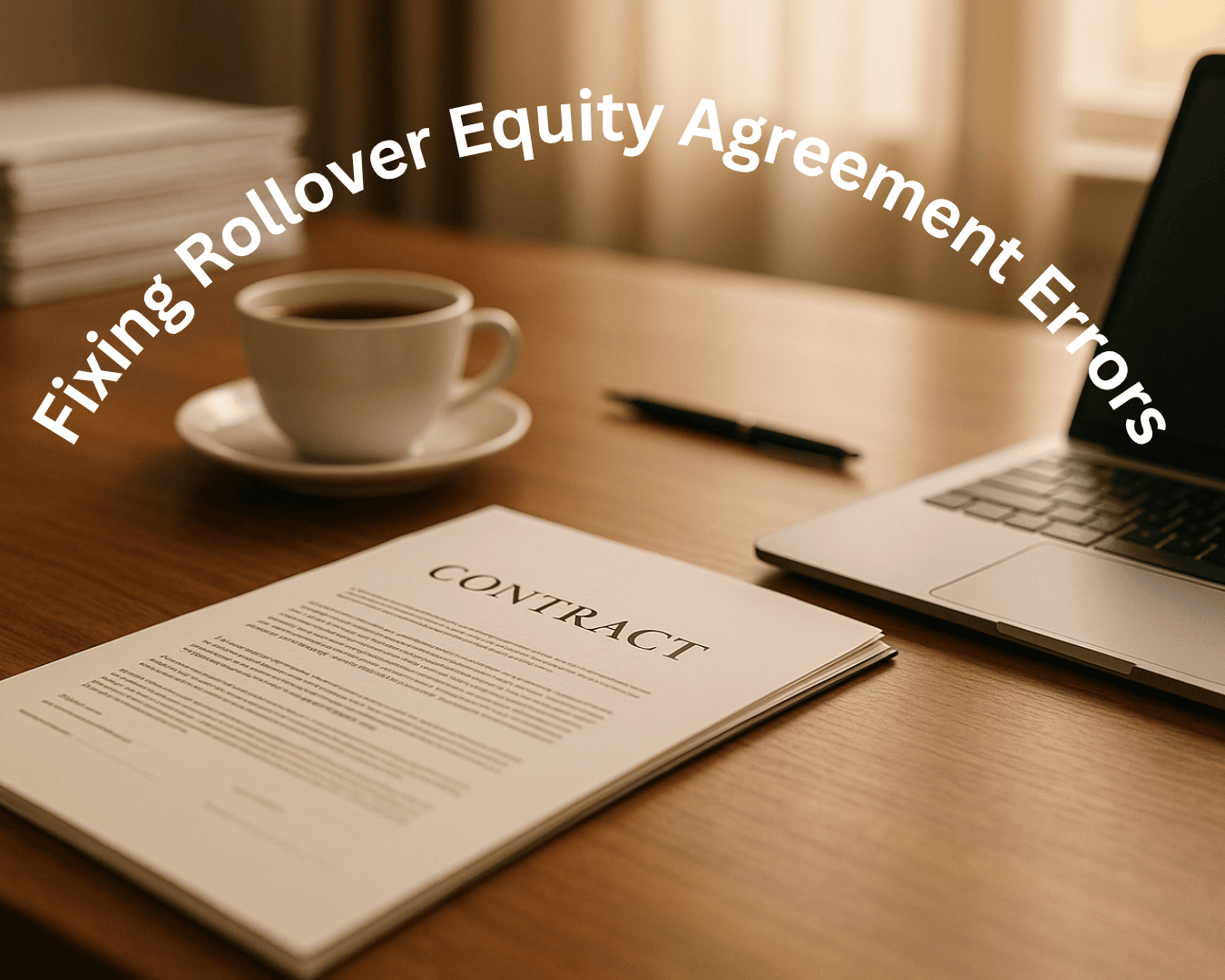When two companies merge, aligning workplace values is critical to avoid employee turnover, workflow disruptions, and cultural clashes. Research shows that nearly 50% of mergers fail due to differences in work environments, and 34% of employees leave within the first year post-acquisition. To succeed, companies must actively manage these challenges, as those who do see a 54% success rate compared to just 9% for those who don't.
Here’s a quick summary of the five steps:
- Assess Current Cultures: Understand both companies’ work environments by reviewing visible practices, stated values, and unspoken norms. Identify commonalities and friction points to guide integration.
- Engage Leadership: Align executives from both organizations through workshops and collaborative discussions to set a unified direction.
- Include Employees: Gather feedback via surveys and focus groups to ensure employees' voices shape the new values.
- Define Core Values: Use leadership and employee input to create actionable, clear principles that reflect the combined organization’s goals.
- Integrate Values into Daily Work: Update HR policies, training, and performance reviews to reflect the new values and revisit them regularly.
Defining shared values is not just a formality - it’s a measurable way to improve engagement, retention, and collaboration, setting the stage for long-term success after an acquisition.
Merging Cultures: 3 Critical Steps to Avoid Mayhem
Step 1: Review and Evaluate Current Cultures
To successfully integrate two organizations, you need to go beyond mission statements and get a clear view of their actual, day-to-day cultures. This involves understanding how work gets done, what values are truly upheld, and what behaviors are rewarded.
The stakes couldn’t be higher. A staggering 95% of executives see cultural fit as critical to integration success, yet 25% blame failed integrations on a lack of cultural alignment. Even more eye-opening: only half of executives surveyed in PwC's 2020 M&A integration report included culture in their change management plans.
"You can't design your 'NewCo' culture until you understand the culture you have already."
– Bill Kozy, former executive vice president and COO at Becton, Dickinson and Company
Start by taking a deep dive into the cultures of both organizations.
Conduct a Culture Review
A thorough culture review involves examining three layers: visible practices, stated values, and unspoken norms.
- Begin with the visible elements - things like office layouts, dress codes, meeting formats, and communication tools. These are the most obvious signs of how a company operates.
- Next, analyze stated values. Check employee handbooks, company websites, and leadership messaging to see what principles the organization claims to live by.
- Finally, uncover the unspoken norms - the underlying behavioral assumptions that truly drive how people work and interact.
This review should cover core areas like workplace norms, communication styles, management practices, decision-making processes, risk tolerance, and approaches to innovation. Use tools like surveys, focus groups, and interviews to gather insights. Observe interactions in meetings, how disagreements are resolved, and even casual conversations during breaks.
Find Gaps and Common Ground
Once you’ve mapped out both cultures, it’s time to identify where they align and where they clash.
Start with the positives. Look for shared strengths, like a mutual commitment to customer service or innovation, even if they’re expressed differently. These commonalities can become the building blocks of your new, unified culture.
But don’t ignore potential friction points. Differences in communication styles, decision-making processes, or management approaches can quickly derail integration efforts if left unaddressed. For example, a hierarchical decision-making structure in one company might clash with a more collaborative approach in the other. Addressing these differences early can prevent future roadblocks.
The numbers speak for themselves: culture-related issues contribute to a 30% failure rate in M&A financial targets, and 67% of organizations experience delays in achieving synergies due to cultural conflicts.
"People feel uncomfortable, and they don't understand why. Leaders from the acquiring company, whose ways of working are typically adopted by default, don't realize how uncomfortable the people from the target business are feeling."
– Aileen Stockburger, former vice president for worldwide business development at Johnson & Johnson
Avoid the trap of simply imposing the acquiring company’s culture. Instead, look for the unique strengths - the "secret sauce" - of the acquired company that could enhance the combined organization. Whether it’s an innovative mindset, a strong sense of community, or a unique approach to customer relationships, these traits can be invaluable.
Also, consider how differing cultural structures might interact. For instance, an organization with strict norms and high compliance expectations could struggle when merging with a more flexible, informal culture. Anticipating these dynamics will help you plan for smoother integration.
Document everything you uncover during this process. A detailed understanding of both cultures will serve as your guide for the next steps, ensuring that key cultural elements aren’t lost in the transition.
The aim isn’t to erase all differences. In fact, diversity in thought and methods can be a strength. The goal is to identify which differences need to be reconciled and which shared values can act as the foundation for your new, unified culture. This groundwork will pave the way for engaging leaders and employees in shaping shared values in the next phase.
Step 2: Get Leadership and Key Stakeholders Involved
After completing your cultural review, the next step is rallying leadership around a unified vision for integration. Research shows that 70–90% of M&A deals fail to deliver value due to cultural clashes during the first 100 days. If leadership isn't aligned during this critical window, the entire integration effort risks falling apart.
But leadership alignment isn’t just about agreeing on paper. It’s about bringing executives from both sides together to resolve differences, set shared priorities, and commit to a direction that inspires employees to follow.
Run Leadership Workshops
Leadership workshops are an essential tool for addressing cultural differences and creating alignment. These structured sessions help leaders work through challenges and establish a clear roadmap for integration.
Start with leadership alignment workshops early in the process. These workshops should include activities like scenario planning, value-mapping exercises, and open discussions to encourage collaboration. Use skilled facilitators who can navigate sensitive topics and help leaders find common ground despite conflicting perspectives.
A great example is Disney’s acquisition of 21st Century Fox in 2018. Disney’s CEO, Bob Iger, prioritized leadership workshops and cross-company teams to merge leadership styles and values. Regular leadership summits and transparent communication played a huge role in keeping morale high and reducing disruptions. This approach not only smoothed the transition but also ensured that key Fox executives stayed on board.
Workshops should have clear goals, breakout sessions for deeper discussions, and opportunities for leaders to share their insights. Most importantly, follow up with actionable plans to ensure these conversations lead to tangible results.
Tackle tough issues head-on. Common roadblocks like clashing leadership styles, conflicting priorities, or resistance to change need to be addressed early. Use transparent communication and conflict resolution sessions to work through these challenges. Establishing clear decision-making protocols can also help avoid confusion and delays.
If tensions run high, consider hiring external facilitators. They bring a neutral perspective and can help bridge gaps between leadership teams with differing communication styles or priorities.
Include Representatives from Both Organizations
To promote accountability and collaboration, form cross-company steering committees with clear decision-making processes. These committees should include a diverse mix of leaders and middle managers from both organizations. This ensures a variety of perspectives are represented while fostering buy-in at all levels.
Be thoughtful in selecting committee members. Go beyond the obvious choices - include individuals who deeply understand their organization’s culture and can articulate what makes it tick. Diversity in roles, seniority, and backgrounds is key to capturing a more complete picture of both organizations.
The goal is genuine collaboration, not just symbolic representation. Joint projects, team-building exercises, and regular progress reviews can help leaders from both sides build trust and work together effectively.
Track progress using measurable outcomes. Monitor metrics like employee engagement, retention rates of key leaders, and feedback from workshops. Use pulse surveys and 360-degree feedback to gather insights on leadership cohesion and cultural alignment.
Throughout the process, transparent communication is critical. Regular updates, open forums, and clear explanations of goals and progress help build trust and prevent misinformation. When leaders from both organizations speak with one voice, it sends a strong message to employees about their shared commitment to creating something new together.
This alignment among leadership sets the stage for engaging employees and defining core values in the next step.
Step 3: Include Employees and Collect Feedback
Once leadership is on the same page, it's time to bring employees into the process. Employees who feel informed by leadership are more likely to adapt quickly and support organizational changes. Engaging employees not only builds trust but also ensures that the new values reflect what matters most to the people within the organization. This feedback becomes the cornerstone for defining the core values in the next phase.
Gathering employee input is also a smart way to reduce turnover - feedback initiatives can lower attrition rates by about 30%. During an acquisition, when uncertainty is already high, losing key employees could jeopardize the entire integration process.
Run Surveys and Focus Groups
Start with employee surveys to gather broad input from both organizations. These surveys should explore what employees value most about their current workplace culture, their concerns about the acquisition, and their hopes for the combined organization.
When designing surveys, focus on clear, specific questions that address cultural priorities, communication preferences, and workplace practices. Keep the surveys anonymous to encourage honest feedback, and ensure participation across all levels of the organization - from junior staff to middle management.
To dive deeper, complement surveys with focus groups. These sessions allow you to unpack survey findings and uncover details that multiple-choice questions might miss.
"There is a direct correlation between feedback and success." - Joe Phelps, CEO and founder of The Phelps Group
For focus groups, include employees from various departments, roles, and locations to get a well-rounded perspective. Use skilled facilitators to manage sensitive discussions and create an environment where everyone feels comfortable sharing. Employees need to feel safe expressing concerns without fear of repercussions.
Act on feedback early and use specific examples to show employees they’ve been heard. For instance, referencing feedback with phrases like "We heard X and Y" validates their input. Incorporate pulse surveys - short, frequent check-ins - to monitor employee sentiment throughout the transition. These surveys can help you catch potential issues before they escalate.
Employees who see follow-up after a survey are 12 times more engaged than those who don’t. This means it’s critical to close the loop: share what you’ve learned, explain how you’re addressing concerns, and demonstrate that their input is driving real change.
Keep Communication Open and Clear
Using the insights from surveys and focus groups, maintain open communication to address employee concerns consistently. Without clear communication, employees may fill the gaps with their own assumptions - and those assumptions are often negative.
Offer multiple ways for employees to provide ongoing feedback. Options like suggestion boxes, town halls, and one-on-one meetings cater to different preferences. While some employees may prefer anonymous digital surveys, others might feel more comfortable sharing their thoughts directly with their managers.
"The only time you are likely to get this successful outcome is in an organization that has a culture based on open, honest, courageous communication." - Sandy Gluckman, Ph.D., president of The Gluckman Group, Inc.
Host town halls regularly to address concerns as they arise. These large-group meetings allow leadership to speak directly to employees, reinforcing transparency and trust. Keep employees updated with consistent progress reports as the integration unfolds.
When employees see that their feedback leads to meaningful changes, engagement rises - quick action on feedback can boost engagement by 24%. This creates a positive cycle where employees feel valued and continue to provide constructive input.
Involving employees in decision-making shows trust and gives them a sense of control during an acquisition. Consider hosting workshops where employees can brainstorm solutions to integration challenges. This collaborative approach not only generates practical ideas but also fosters a sense of ownership and commitment to the changes ahead.
Transparent communication and active listening reinforce the leadership's commitment while laying the groundwork for defining core values. When employees recognize their input in the final values, they're far more likely to embrace and champion those values in their everyday work.
sbb-itb-a3ef7c1
Step 4: Create and Communicate Core Values
After gathering insights from employee feedback, it’s time to establish your shared core values. This step is essential for a smooth integration process. In fact, 95% of executives consider cultural fit critical to integration success, while 25% point to a lack of cultural alignment as the main reason integration efforts fail.
These values will shape every decision, policy, and interaction moving forward. They need to honor both organizations’ histories while steering toward a shared future.
Finalize Values Through Collaboration
Building meaningful values isn’t something you can dictate from the top. It takes teamwork. Core values play a key role in uniting teams, driving motivation, and boosting productivity.
Organize collaborative workshops with representatives from both organizations. Use this time to review feedback, identify shared priorities, and address any potential conflicts. For example, if both companies value innovation but approach it differently - one through rapid experimentation and the other through careful research - you’ll need to find a way to harmonize these approaches.
The goal is to uncover common ground and resolve cultural differences. When values align naturally, they provide a solid foundation. When there’s a clash, you’ll need to get creative - either bridging the gap or choosing the path that benefits your combined organization the most.
This process is about blending strengths from both sides to create something new and meaningful. It’s not about picking winners and losers; it’s about honoring what made each organization successful while setting the stage for future growth.
Consider using structured activities during your workshops. Encourage teams to brainstorm behaviors they’d like to see more often, principles to guide tough decisions, and the kind of workplace culture that will help achieve business goals. Focus on actionable, specific values rather than abstract ideas.
Netflix offers a great example. They measure employees on the value they bring to members, showing how values can directly connect to business outcomes and guide daily decisions.
Trust and respect are key to effective collaboration. When participants feel heard and valued, they’re more likely to support and promote the final set of values across the organization.
Once your core values are defined, the next step is documenting them clearly and ensuring they’re communicated effectively throughout the company.
Write Down and Share Values Across the Organization
Clarity is everything when it comes to documenting your values. Avoid vague statements like “we value excellence.” Instead, explain what each value means in practice and provide real-world examples. Starbucks exemplifies this approach by creating detailed guiding principles and commitments, particularly in areas like diversity, equity, and inclusion.
Effective communication is just as important as defining the values themselves. Organizations that communicate well during mergers and acquisitions are 3.5 times more likely to retain employees. On the flip side, poor communication contributes to 30-50% of failed mergers.
Develop a communication strategy that reaches employees through multiple channels. Since 70% of employees prefer to hear merger-related news directly from company leaders, ensure leadership takes ownership of delivering the message.
"It should be the leader saying it because they've got to sponsor it. There's going to be so much change going on that they've got to own the challenge." – David Olsson, Managing Director at the Institute for Mergers, Acquisitions and Alliances (IMAA)
Use a mix of town halls, team meetings, email updates, and your company intranet to share the new values. 73% of employees say communication during M&A reduces anxiety and uncertainty, so make sure your messaging is consistent and thorough.
When communicating the values, explain not just what they are but why they matter. Share stories about how employee feedback shaped these values, showing that their voices were heard and valued.
Consistency is key - your internal messaging should align with any external communications. This alignment builds trust and reinforces the authenticity of the values.
The impact of clear communication is undeniable. Among employees who know their company’s core values, 88% report being engaged, compared to just 54% of those who don’t. Additionally, 65% of workers who can name their values say they understand company objectives, compared to only 23% of those who don’t know the values.
Step 5: Build Values into Daily Work
Once you've defined your core values, the real challenge begins: weaving them into the fabric of your daily operations. Without this step, your values risk becoming nothing more than words on a wall. This is where you turn those guiding principles into actionable practices that shape how your newly unified organization operates.
With your values clearly articulated and shared across the company, the next step is to make them a living, breathing part of every function within your organization.
Update HR Policies and Training Programs
One of the most effective ways to bring values to life is by embedding them into your HR policies. This means revisiting job descriptions, interview questions, performance reviews, and even disciplinary procedures to ensure they align with your organization's principles. Think of it as viewing every HR process through the lens of your core values to reflect what your company truly represents.
Onboarding programs are especially critical during post-acquisition transitions. New hires should grasp your values from day one, while current employees need to understand how these values translate into their daily responsibilities. Create training modules that use real-world examples to illustrate your values, setting clear expectations for behavior.
Performance management is another powerful tool for reinforcing values. Go beyond measuring what employees achieve - evaluate how they achieve it. Incorporate value-based assessments into performance reviews and tie promotions or recognition to behaviors that align with your principles. This sends a clear message: your values aren't just ideals; they're part of how success is defined.
Your hiring process should also reflect these values. Train recruiters and hiring managers to assess candidates not only for their technical skills but also for their alignment with the organization's culture. As your company grows, maintaining this cultural alignment will be essential.
Don't forget to update your employee handbook. Include straightforward definitions of the behaviors that reflect your values in action. Regular reviews will ensure these guidelines evolve alongside your organization.
Review and Reinforce Values Regularly
Values aren't a "set it and forget it" kind of thing - they need ongoing attention to stay relevant and meaningful. Plan for a thorough review of your employee handbook, including workplace values, at least once a year. If employment laws change or your organization undergoes significant shifts, more frequent updates may be necessary to ensure compliance and alignment.
Dedicate time to periodically reassess your workplace values, involving key stakeholders in the process. This not only keeps your values actionable but also ensures they align with your evolving business goals. Revisiting your workplace culture, code of conduct, and ethics regularly helps reinforce these principles and keeps them at the forefront of your organization's identity.
As your business grows, your employee handbook should grow with it. By aligning it with your values, you create a stronger sense of belonging and establish clear cultural norms.
Consistency and persistence are the backbone of successful values integration. When employees see these principles reflected in policies, decisions, and everyday interactions, they naturally become an essential part of your organizational culture.
Conclusion: Building a Unified Culture After an Acquisition
Establishing shared workplace values after an acquisition lays the groundwork for long-term success. It’s the process of blending two distinct cultures into a single, thriving environment where collaboration and engagement can flourish.
The integration process, as outlined earlier, follows a structured five-step approach: start by evaluating the existing cultures, then bring together key stakeholders to define shared values that reflect the new organization. Finally, embed those values into daily operations to create a consistent cultural framework.
Cultural misalignment can be costly - estimates suggest it may range from 50% to 200% of an employee's annual salary following an acquisition. By building a unified culture, you not only reduce this risk but also enhance teamwork, morale, and operational continuity. This alignment becomes the driving force behind achieving your strategic goals while minimizing internal friction.
However, defining values is just the beginning. As your organization evolves and adapts to market changes, those values must also grow. The most successful companies treat their workplace values as dynamic, living principles. Regularly revisiting and refining these values ensures they remain relevant and effective, providing reassurance to your team and reinforcing the culture you’ve worked hard to create.
For businesses navigating acquisitions, a solid support framework is essential. Whether it’s your first acquisition or one of many, careful planning and execution are critical to ensuring your cultural foundation supports sustainable growth.
While the first 100 days post-acquisition are crucial for maintaining business continuity and building stakeholder confidence, creating a truly unified culture is a long-term effort. It requires consistent communication, thoughtful decision-making, and an unwavering commitment to strengthening the cultural foundation at every step. By embedding shared values deeply into the organization, you set the stage for lasting success.
FAQs
How can companies evaluate and align the cultures of two organizations after an acquisition?
To bring cultures together effectively after an acquisition, companies should begin with employee surveys and cultural assessments. These tools can reveal shared values while also pinpointing potential areas of conflict. By identifying commonalities and addressing differences upfront, businesses can lay the foundation for smoother integration.
It’s also important to dig deeper into less obvious cultural factors, like communication styles, decision-making approaches, and leadership expectations. Understanding these dynamics can help anticipate challenges and make the transition more seamless. Tackling these differences head-on fosters a more cohesive and unified workplace culture over time.
How can we effectively engage employees in defining workplace values after an acquisition?
Engaging employees in defining workplace values after an acquisition is key to creating a cohesive culture. One effective approach is to involve team members in workshops or listening sessions where they can share their thoughts on shared goals and principles. This not only ensures their input is valued but also helps them feel more connected to the process.
It's equally important to maintain clear and honest communication about how the acquisition will affect the organization. Sharing updates regularly and encouraging open conversations can ease uncertainties, build trust, and reduce anxiety among employees.
Additionally, fostering a culture of empathy and appreciation can make a big difference during this period of change. Recognizing employees' efforts and contributions helps maintain motivation and alignment, paving the way for a smoother integration of values and culture.
How can companies make sure their core values are part of everyday work and not just ideas on paper?
To make core values a meaningful part of daily operations, companies should turn them into clear, actionable behaviors that employees can practice. These behaviors can be integrated into performance evaluations, team objectives, and everyday decision-making.
Reinforcing these values regularly is key. This can be done through consistent communication, recognition programs, and constructive feedback. It's also crucial that employees witness these values in action - through leadership decisions and company policies. When leaders model the values and policies align with them, it creates consistency across the organization. By making these values both visible and actionable, they naturally become part of the company’s daily rhythm.








.png)







































.png)








































%20Loan%20Application%20Checklist.png)




















